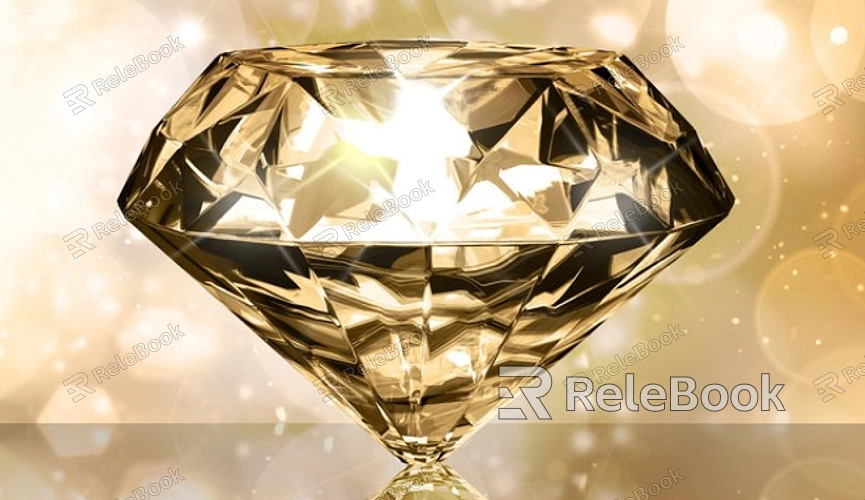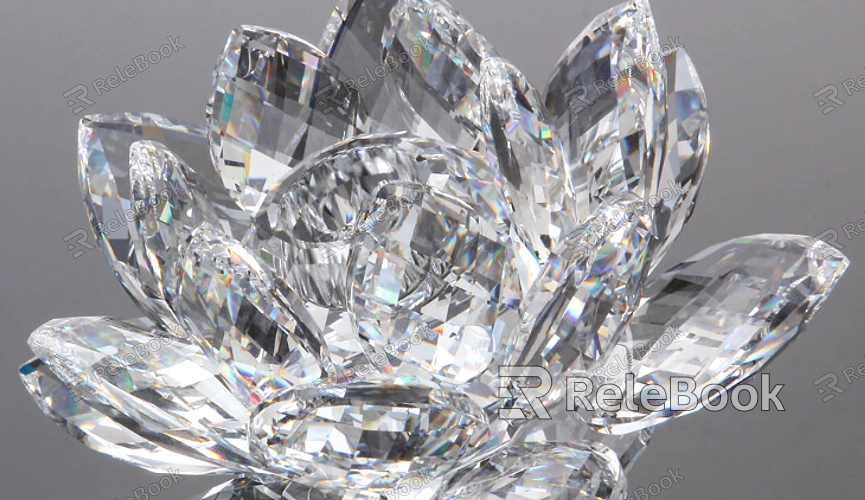How to Combine HDR Lighting with Diamond Texture in SketchUp?
SketchUp, a widely used 3D modeling software, is often paired with rendering engines like V-Ray, supporting HDR lighting and high-quality material rendering. When working with highly refractive materials such as diamonds, HDR lighting significantly enhances the realism of light reflections and refractions, resulting in a more visually stunning outcome. This article explores how to combine HDR lighting with diamond textures in SketchUp, from setting up the scene to final rendering, helping you achieve more lifelike results in your designs.

1. Set Up the Scene and Diamond Model To make HDR lighting work effectively with diamond textures, you need to start by building the base scene and model.
Import the diamond model: Load a pre-made diamond model, ensuring its geometry reflects the real shape of a diamond. The shape is crucial because the way light refracts and reflects in the diamond is directly influenced by its geometry. A properly modeled diamond will better simulate the optical properties.
Assign materials: Choose high-quality materials and ensure that the reflectivity, refractivity (typically an index of 2.42), and transparency are accurately set. Using V-Ray’s material editor, you can select glass-like or custom materials that mimic the intricate sheen of a diamond’s surface.
2. Choosing and Importing HDR Lighting Once the scene and diamond model are in place, the next step is to import the appropriate HDR file to light the scene.
Pick the right HDR file: Select an HDR image file with a wide range of light variations. Ideally, choose an HDR with strong contrast between light and shadow, such as daylight scenes or environments with dynamic lighting. This helps to highlight the diamond’s high points and shadows.
Import the HDR file: Through SketchUp’s rendering plugins (such as V-Ray), load the HDR file into the environment lighting settings. Using V-Ray’s “Dome Light” feature, you can apply the HDR file to the scene, creating a comprehensive and natural lighting environment.
3. Adjust the Brightness of HDR Lighting To ensure the diamond’s surface stands out, fine-tuning the brightness of the HDR file is essential.
Exposure adjustments: Through V-Ray’s “Dome Light” settings, you can tweak the exposure to control the overall brightness of the lighting. Higher exposure will make the diamond appear more brilliant, while lower exposure can help avoid overexposure.
Brightness and contrast tweaks: In addition to exposure, tools like V-Ray’s post-production settings allow you to adjust the brightness and contrast of the HDR image, making the lighting on the diamond appear more natural and balanced.
4. Enhance the Diamond’s Optical Properties The visual impact of a diamond goes beyond lighting—it’s closely tied to how it handles reflection and refraction.
Reflectivity and highlights: Adjust the reflectivity parameter to control the glossiness and highlight strength of the diamond’s surface. If the reflection is too strong, the diamond might appear overly bright, while weak reflection may dull its sparkle.
Setting the refractive index: Ensure the diamond’s refractive index (IOR) is around 2.42. This setting more accurately simulates how light bends and scatters within the diamond, giving it a realistic sparkle.

5. Optimizing Render Settings Combining HDR lighting with diamond textures requires careful render settings to achieve the best results.
Anti-aliasing and detail rendering: To maintain the diamond’s fine details, increase the anti-aliasing (AA) value in the render settings. Also, boost the ray-tracing depth to ensure light rays refract correctly within the diamond.
Light attenuation and ambient occlusion: Use light attenuation and ambient occlusion techniques to enhance the interaction between the diamond and its surroundings, giving the scene more depth and making the diamond stand out.
6. Test and Adjust Different Lighting Conditions Testing multiple render settings is key to refining the combination of HDR lighting and diamond textures.
Experiment with different HDR files: Try different types of HDR images to see how the diamond reacts to various lighting conditions. For example, daylight, shadow, and sunset scenes will showcase the diamond in unique ways.
Modify scene lighting: Don’t just rely on HDR lighting. Add additional light sources to the scene to further refine highlights and reflections on the diamond’s surface.
7. Rendering and Post-Processing After setting everything up, focus on rendering output and post-processing to enhance the final image.
Render output format: Choose a suitable output format, like EXR or PNG, which preserves a high dynamic range. This allows for more flexibility in adjusting brightness and contrast during post-processing.
Post-production brightness and color correction: Using software like Photoshop or After Effects, fine-tune the brightness, contrast, and colors in the final render to ensure the diamond meets your visual expectations.
8. Save Settings and Materials for Future Use To streamline future projects, save your current HDR lighting and material configurations.
Save HDR presets: Store your HDR lighting settings as a preset, allowing you to quickly apply the same lighting scheme in other projects.
Save materials and textures: Keep your custom diamond materials and textures saved so you can easily reuse them in similar design scenarios.
By integrating HDR lighting with diamond textures in SketchUp, designers can achieve a heightened sense of realism in their visual presentations. Not only does this boost the authenticity of diamond materials, but it also enhances the lighting effects, making the render more dynamic and engaging. If you’re looking for high-quality HDR images or need 3D textures and models to elevate your designs, Relebook offers a wide range of resources to help you achieve exceptional results in your projects.

